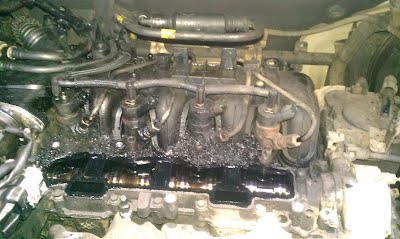Need an injector removed ?
Call us on
07799108594 or 07718113158
Peugeot Euro Engine DV4 / 6, Ford DPeugeot Euro Engine DV4 / 6, Ford DLD Engine
This engine is fitted to most small Peugeot, Citroen and Ford cars
DV4
2005-2008 Citroen C1, Peugeot 107 , Toyota Aygo 1.4 HDI
2003-2009 Citroen C2 1.4 HDI
2002-2009 Citroen C3 1.4 HDI
2002-2008 Ford Fiesta 1.4 TDCI
2002-2008 Ford Fusion 1.4 TDCI
2002-2009 Peugeot 206 1.4 HDI
2005-2009 Peugeot 1007 1.4 HDI
2004 Citroen Xsara 1.4 HDI
2002-Present Mazda 2 / Demio 1.4 D
2001-2005 Citroen C3 1.4 HDI 16V
2002-2005 Suzuki Liana 1.4 DDIS
DV6
2007-2008 Suzuki SX4 1.6 DDIS
2007-2009 Mini Cooper D 1.6
2010-Present Citroen C3 Picasso 1.6 HDI
2007-Present Citroen C4 Picasso 1.6 HDI
2006-Present Citroen Berlingo 1.6 HDI
2008-2009 Citroen C2 1.6 HDI
2005-Present Citroen C3 1.6 HDI
2009-Present Citroen DS3 1.6 HDI
2011-Present Citroen DS4 1.6 HDI
2004-Present Citroen C4 1.6 HDI
2004-Present Citroen C5 1.6 HDI
2004-2009 Citroen Xsara Picaso 1.6 HDI
2010-Present Ford C-max / Grand C-max 1.6 TDCI
2005-Present Ford Fiesta 1.6 TDCI
2005-2012 Ford Fusion 1.6 TDCI
2003-2010 Ford Focus 1.6TDCI
2003-2010 Ford Focus C-max 1.6 TDCI
2008-Present Mazda 2 MZ/CD 1.6
2003-Present Mada 3 MZ/CD 1.6
2003-2006 Peugeot 206 1.6 HDI
2006-2012 Peugeot 207 1.6 HDI
2005-2008 Peugeot 307 1.6 HDI
2008-present Peugeot 308 1.6 HDI
2003-2010 Peugeot 407 1. HDI
2010-present Peugeot 508 1.6 HDI
2007-2012 Volvo C30 D2
2004-1012 Volvo S40 1.6 D
2004-2012 Volvo V50 1.6 D
2010-Present S60 / V60 1.6 D
2007-Present Volvo V70 1.6 D
2009-Present Volvo S80 1.6 D
Common Injector Related Issues
Diagnostics
Once again the diagnostic prospects on this engine is good but as always is wholly dependent upon the quality of the tool used.
Injector seal failure
Probably one of the most common failures on these engines is the copper injector washer or seal, most recognizable by the build up of carbon around the injector with the leak.
The first photo shows the grooves cut into the washer when the driver continues to use the vehicle without repair not realizing the damage this can cause. The second Photo shows
the obvious build up of carbon from the leak this is usually accompanied by a smell of fuel or exhaust fumes.
Continuing to drive a vehicle with a seal leaking can in the worst case destroy an injector or even a cylinder head, meaning big bills. plus the added carbon build up can even destroy the whole engine , something which is common to these vehicles, by blocking pipes and filters, reducing the oil flow around the engine and destroying bearings.
Injector failure
These injectors are usually good being Solenoid, failure is most commonly down to overheating of the tip jamming the needle, usually caused by blow-past of the injector seals,
a further incidental fault caused by the seals leaking is a groove cut into the sealing seat caused by the high pressure gases forcing their way through the gap, in conjunction with this and the most common giveaway that this is happening is the visible carbon build up around the offending injector (black death) along with the smell of fuel leaking into the passenger cabin area.
Injector seizure
These injectors can be excessively tight and require dismantling to allow a decent puller to be fitted to remove them,
The cause usually being corrosion between the injector body and the cylinder head / liner tube.
Injector liner / tube
The liner tube commonly comes out with tight injectors, requiring a whole different set of tools to refit them correctly. New tubes are required as the old tube is usually seized onto the old injector body
and is not reusable as attempts at removal from the injector usually damage it beyond repair. We have the facilities to fit new tubes when required and keep a stock of both the tubes and the seals for this purpose. As far as the dealers are concerned at the time of writing where a tube comes out, a new cylinder head is required as they have no facilities to refit tubes.

